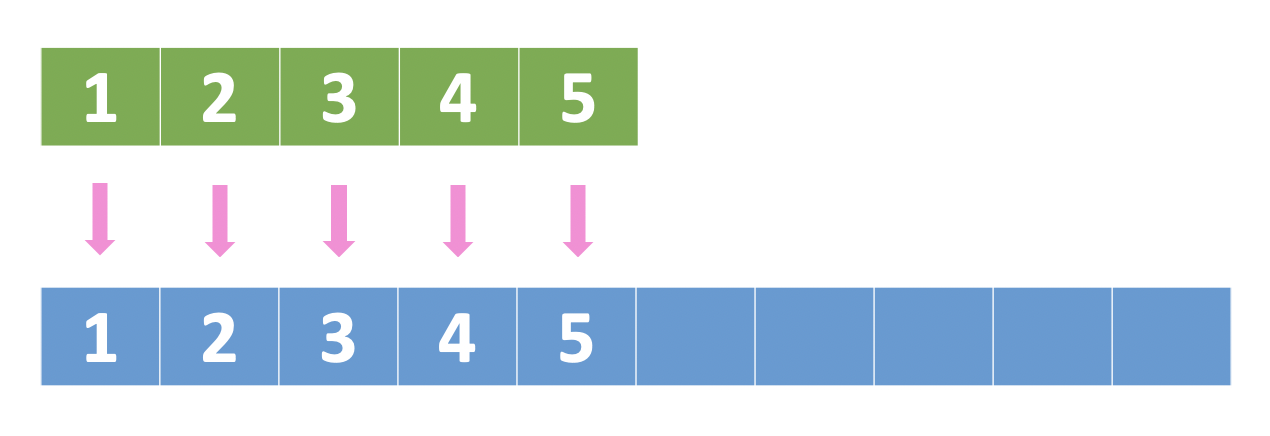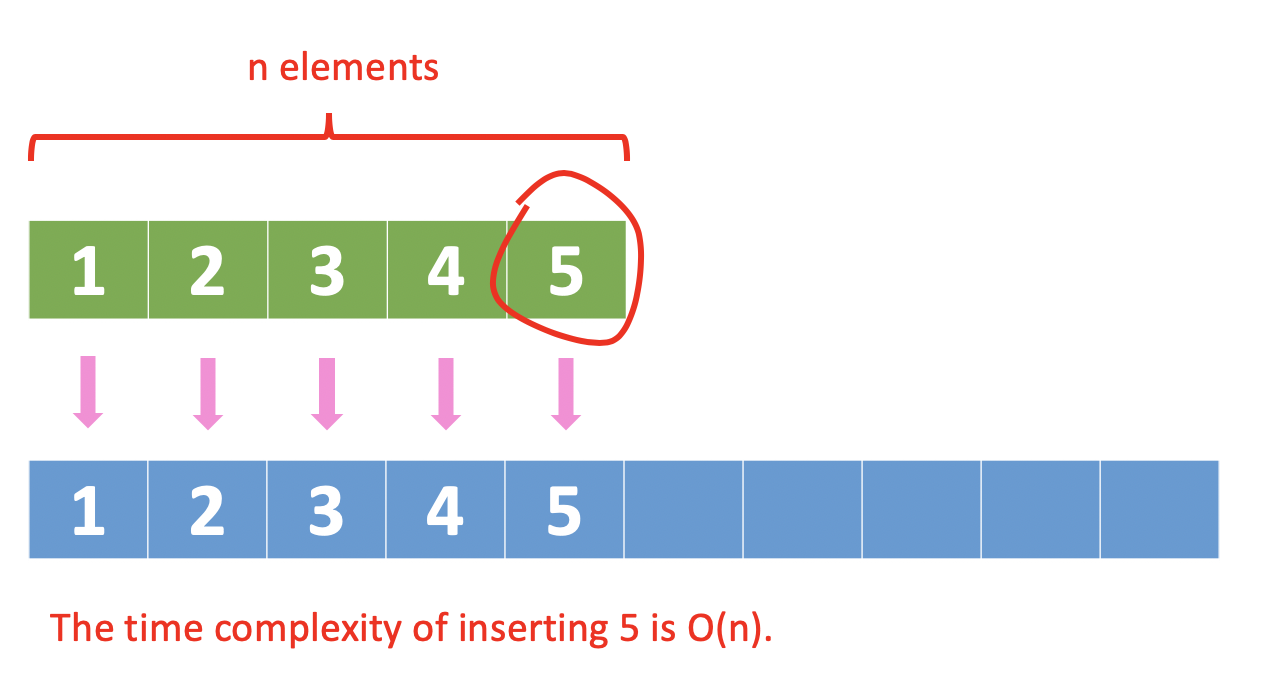Amortized Complexity
Amortized Complexity
Amortized time complexity considers the overall effect of a set of operations. One typical example used to demonstrate amortized time complexity is the dynamic array.
Suppose we have an empty array:

Now we want to insert an unknown number of elements into this array. When the array gets full, we need to create a new array that is double the size, and copy everything into this new array:

Next time when the array gets full again, we create a double-sized array again and copy everything into this new array…
When we insert an element that does not trigger an array expansion, the time complexity is just O(1):

However, when we insert an element that triggers an array expansion, we need to copy n items into a new array, which is in O(n):

So, for a dynamic array, what is the real time complexity of insertion? In this case, we use amortized time complexity.
As mentioned above, we create an empty array, which can contain 5 elements. Each time the array becomes full, we double its size and do the copy. For simplicity, assume we want to insert n = 5 * 2^k elements into this array, the process would be:
1 | 5 insertions (initial size: 5) |
We have 5 + 5 * (1 + 2 + 4 + ... + 2^k-1) insertions(because 1 + 2 + 4 + ... + 2^k-1 = 2^k - 1, we can know that 5 + 5 * (1 + 2 + 4 + ... + 2^k-1) = 5 * 2^k = n), and 5 * (1 + 2 + 4 + ... + 2^k-1) copies. Therefore we have 5 + 2 * 5 * (1 + 2 + 4 + ... + 2^k-1) operations in total. Then we can calculate the amortized cost of inserting n elements:
1 | amortized cost = 5 + 2 * 5 * (1 + 2 + 4 + ... + 2^k-1) ➗ n |
This is quite understandable. Indeed, inserting 5 * 2^k elments into a dynamic array costs 5 + 2 * 5 * (1 + 2 + 4 + ... + 2^k-1) operations.
Then we can obtain the amortized time complexity, which is θ(1), or O(1).
In Java, ArrayList is actually resizable array, and it uses a growth policy. Each time the ArrayList becomes full, its capacity grows automatically. And similarly, ArrayList.add has constant amortized time complexity(i.e., O(1)).